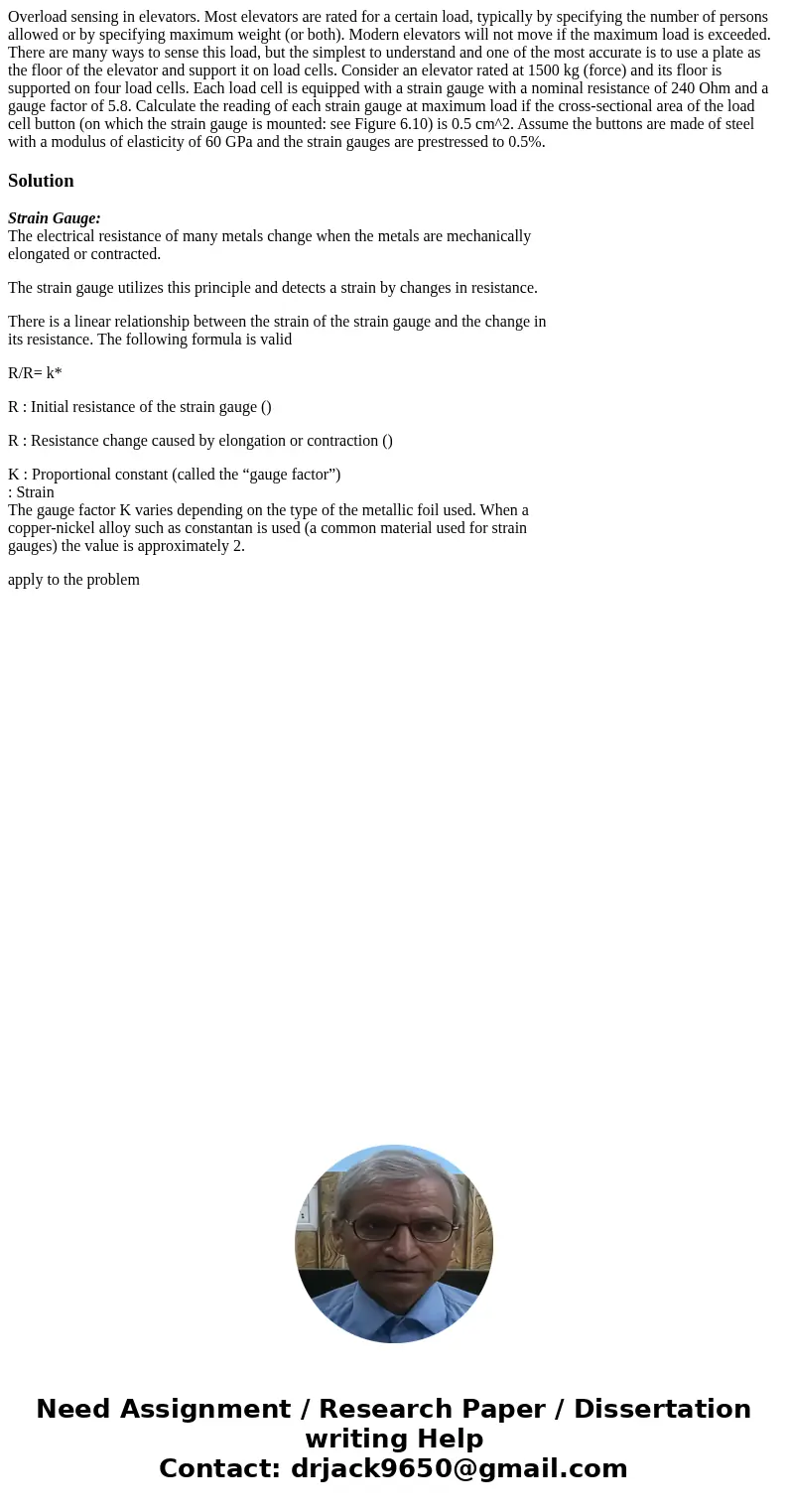Overload sensing in elevators Most elevators are rated for a
Overload sensing in elevators. Most elevators are rated for a certain load, typically by specifying the number of persons allowed or by specifying maximum weight (or both). Modern elevators will not move if the maximum load is exceeded. There are many ways to sense this load, but the simplest to understand and one of the most accurate is to use a plate as the floor of the elevator and support it on load cells. Consider an elevator rated at 1500 kg (force) and its floor is supported on four load cells. Each load cell is equipped with a strain gauge with a nominal resistance of 240 Ohm and a gauge factor of 5.8. Calculate the reading of each strain gauge at maximum load if the cross-sectional area of the load cell button (on which the strain gauge is mounted: see Figure 6.10) is 0.5 cm^2. Assume the buttons are made of steel with a modulus of elasticity of 60 GPa and the strain gauges are prestressed to 0.5%.
Solution
Strain Gauge:
The electrical resistance of many metals change when the metals are mechanically
elongated or contracted.
The strain gauge utilizes this principle and detects a strain by changes in resistance.
There is a linear relationship between the strain of the strain gauge and the change in
its resistance. The following formula is valid
R/R= k*
R : Initial resistance of the strain gauge ()
R : Resistance change caused by elongation or contraction ()
K : Proportional constant (called the “gauge factor”)
: Strain
The gauge factor K varies depending on the type of the metallic foil used. When a
copper-nickel alloy such as constantan is used (a common material used for strain
gauges) the value is approximately 2.
apply to the problem

 Homework Sourse
Homework Sourse